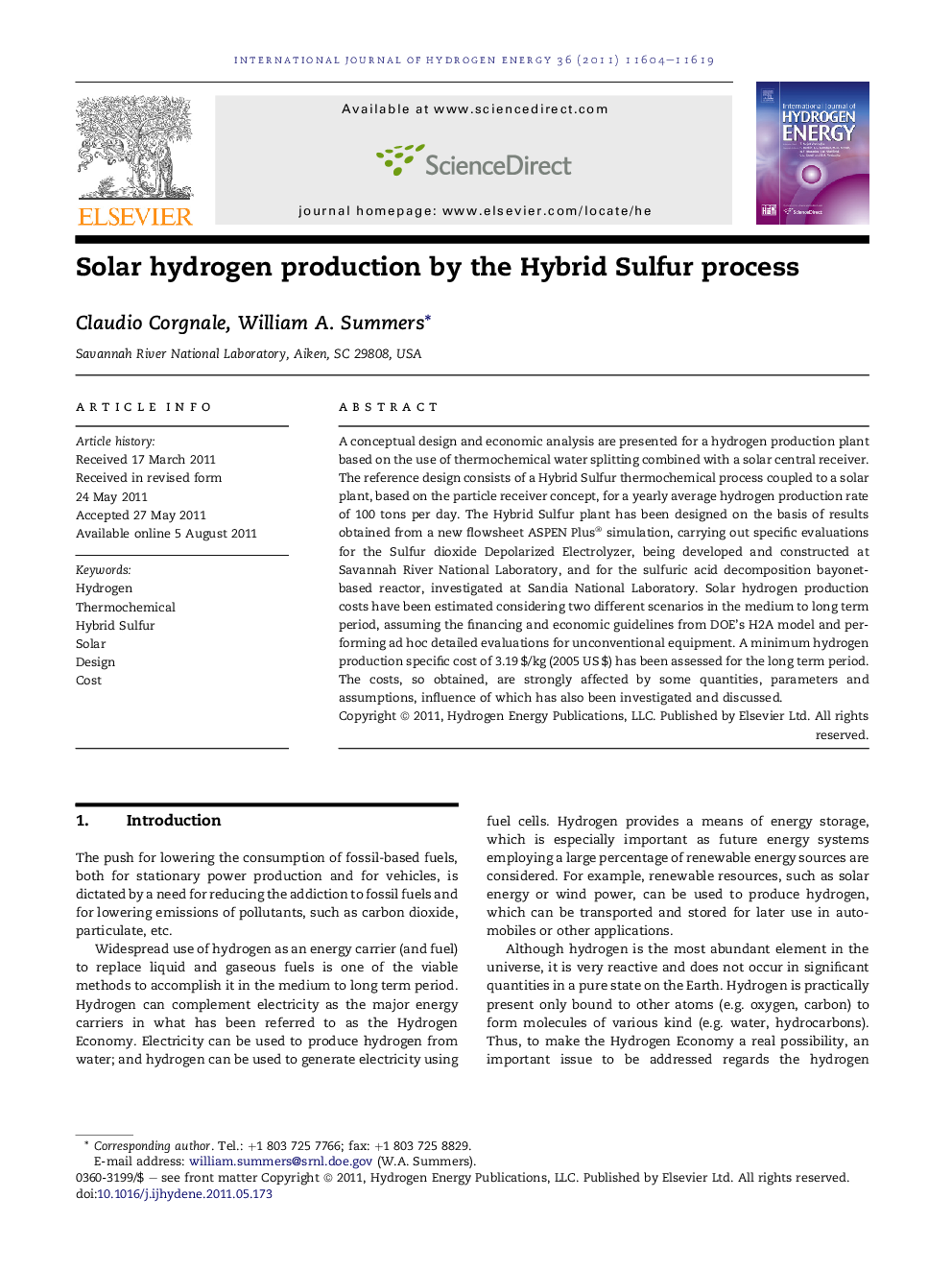| کد مقاله | کد نشریه | سال انتشار | مقاله انگلیسی | نسخه تمام متن |
|---|---|---|---|---|
| 1275849 | 1497575 | 2011 | 16 صفحه PDF | دانلود رایگان |

A conceptual design and economic analysis are presented for a hydrogen production plant based on the use of thermochemical water splitting combined with a solar central receiver. The reference design consists of a Hybrid Sulfur thermochemical process coupled to a solar plant, based on the particle receiver concept, for a yearly average hydrogen production rate of 100 tons per day. The Hybrid Sulfur plant has been designed on the basis of results obtained from a new flowsheet ASPEN Plus® simulation, carrying out specific evaluations for the Sulfur dioxide Depolarized Electrolyzer, being developed and constructed at Savannah River National Laboratory, and for the sulfuric acid decomposition bayonet-based reactor, investigated at Sandia National Laboratory. Solar hydrogen production costs have been estimated considering two different scenarios in the medium to long term period, assuming the financing and economic guidelines from DOE’s H2A model and performing ad hoc detailed evaluations for unconventional equipment. A minimum hydrogen production specific cost of 3.19 $/kg (2005 US $) has been assessed for the long term period. The costs, so obtained, are strongly affected by some quantities, parameters and assumptions, influence of which has also been investigated and discussed.
► Technical feasibility of H2 production by solar Hybrid Sulfur cycle demonstrated.
► The conceptual design of the thermochemical plant is presented in the paper.
► The conceptual design of the high temperature solar plant is shown in the paper.
► Economic analysis is discussed in the paper for the medium to long period.
► Economic sensitivity analysis performed, showing the variation of the H2 cost
Journal: International Journal of Hydrogen Energy - Volume 36, Issue 18, September 2011, Pages 11604–11619